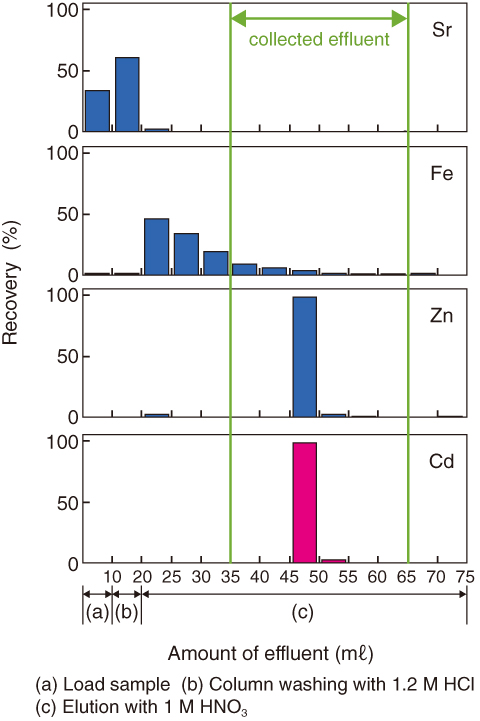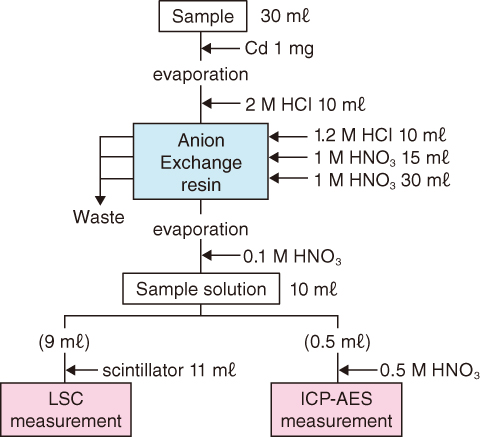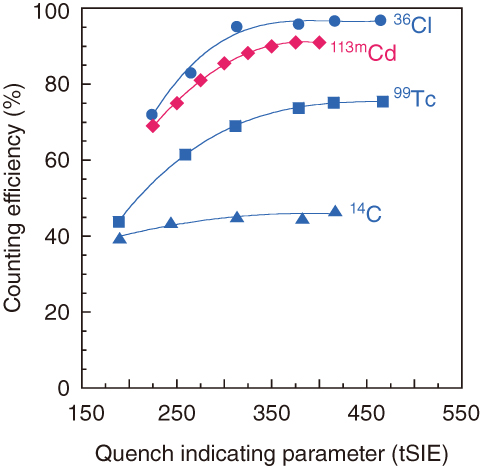
Fig.1-41 Recovery of Cd, Zn, Fe, and Sr as functions of the amount of effluent

Fig.1-42 Analytical procedure for 113mCd

Fig.1-43 Counting efficiency as a function of the quench indicating parameter (tSIE)
In the TEPCO’s Fukushima Daiichi NPS, the wastewater containing radioactive nuclides is treated by water treatment systems. To check the removal performance of radioactive nuclides by the Advanced Liquid Processing System (ALPS) (which is one of the water treatment systems), it is necessary to evaluate the activity concentration of nuclides in water treated by ALPS. Since the γ-ray emission ratio of Cadmium-113m(113mCd) (which is one of nuclides to be evaluated) is small (0.023%), we cannot apply non-destructive γ-ray measurement. Therefore, a new analysis method that measures β-rays (emission ratio: 99.9%) was examined.
To measure the β-rays of 113mCd with sufficient accuracy, it was necessary to separate the other nuclides and elements. An anion-exchange procedure was applied to this separation. The examination result of the separation condition of Cd and the other elements is shown in Fig.1-41. Most of the Cd eluted to 45-50 mℓ of effluent. When 35-65 mℓ of effluent was collected, Cd could be efficiently separated and collected from the other elements. The 113mCd analysis procedure established based on this result is shown in Fig.1-42. β-rays of 113mCd were measured using a liquid scintillation counter (LSC). Since the counting efficiency of LSC is decreased by quenching phenomena, it is necessary to calibrate its efficiency. However, since a standard solution of 113mCd was difficult to purchase from vendors, the β-ray counting efficiency of 113mCd was estimated using other β-ray-emitting nuclides (Fig.1-43).
When the sample, which was a simulation of water treated by ALPS, was analyzed using this established analysis method, more than 97% of Cd was recovered, and a minimum detectable activity of 0.004 Bq/mℓ was obtained. Through the above examination, we contributed to the performance assessment of ALPS.